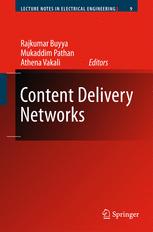

Most ebook files are in PDF format, so you can easily read them using various software such as Foxit Reader or directly on the Google Chrome browser.
Some ebook files are released by publishers in other formats such as .awz, .mobi, .epub, .fb2, etc. You may need to install specific software to read these formats on mobile/PC, such as Calibre.
Please read the tutorial at this link: https://ebookbell.com/faq
We offer FREE conversion to the popular formats you request; however, this may take some time. Therefore, right after payment, please email us, and we will try to provide the service as quickly as possible.
For some exceptional file formats or broken links (if any), please refrain from opening any disputes. Instead, email us first, and we will try to assist within a maximum of 6 hours.
EbookBell Team

4.8
84 reviewsContent Delivery Networks enables the readers to understand the basics, to identify the underlying technology, to summarize their knowledge on concepts, ideas, principles and various paradigms which span on broad CDNs areas. Therefore, aspects of CDNs in terms of basics, design process, practice, techniques, performances, platforms, applications, and experimental results have been presented in a proper order. Fundamental methods, initiatives, significant research results, as well as references for further study have also been provided. Comparison of different design and development approaches are described at the appropriate places so that new researchers as well as advanced practitioners can use the CDNs evaluation as a research roadmap. All the contributions have been reviewed, edited, processed, and placed in the appropriate order to maintain consistency so that any reader irrespective of their level of knowledge and technological skills in CDNs would get the most out of it. The book is organized into three parts, namely, Part I: CDN Fundamentals; Part II: CDN Modeling and Performance; and Part III: Advanced CDN Platforms and Applications. The organization ensures the smooth flow of material as successive chapters build on prior ones.